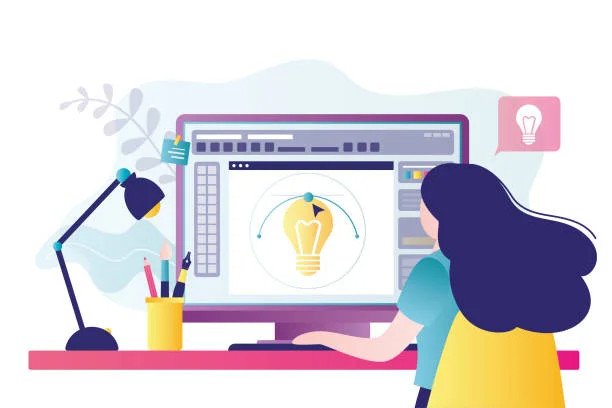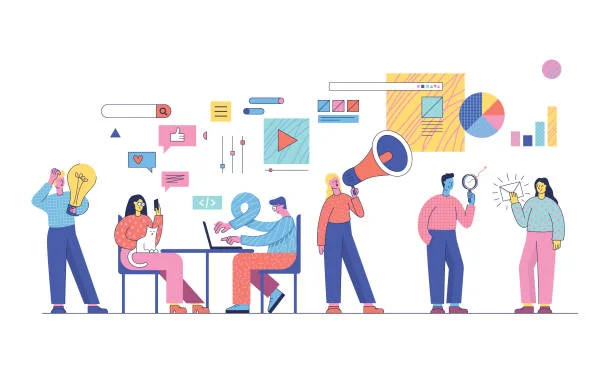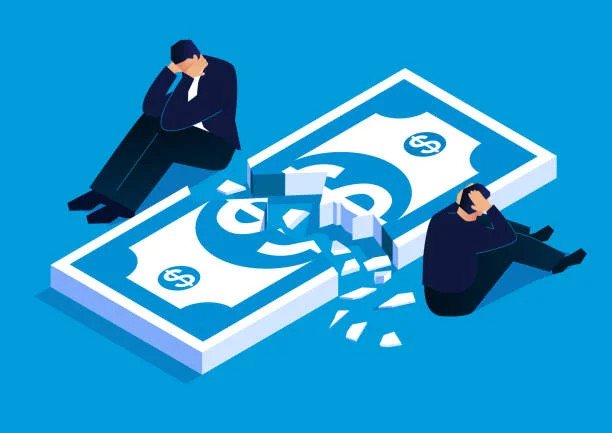Whether you’ve just started recruiting or have a fully established product design team, you know design recruitment is difficult.
Most designer searches take longer than six months. Building product design teams is very challenging.
We at Hapy Design will share our five years of startup expertise to make the process more transparent. We’ve interviewed so many professional and experienced designers this year that we have quantitative and qualitative data on how to build a strong startup product design team.
Types of Product Designers
It is crucial for startups to be aware that they will require two kinds of creative specialists for the design process of products, “design explorer” and “design creator”.

1- Design Explorer
During the discovery phase, you will be expected to conduct research on the market, investigate the product, and think up the first concepts for the design. During this part of the project, you should be searching for the “Design explorer”. In general, an explorer designs quickly, but not with the same level of attention to detail as a “design maker”. They, on the other hand, are quite skilled when it comes to researching the market and the trends. They are able to compile a database of design discoveries for you, which will assist you in selecting the most promising idea for a profitable product.
2- Design Maker
For design asset creation, you’ll need a design maker. They can build and manage a large design system with 500 screens, 100 icons, and 3 landing sites. They’ll help to:
- Organize a product-design process
- Prepare papers
- And build methods to implement design explorers’ ideas.
Product designers stay with a startup and grow with it. Once a firm is financed, It may need to design a new website or app for iOS if you just had an Android MVP. A product designer may help with all these concerns.
Product Design vs Product Development
Product Design differs from Product Development in that the design team handles all design activities. The design creates the product’s feel and appearance. First, choose the right components for the Product’s architecture. Product designs are used in healthcare, IT, and small and large organizations.
Whereas a development team is responsible for the programming on the front and back end of the product and other features like the security that actually makes a product functional.

To be at the head of the pack in the industry, it is necessary for any company to continually develop groundbreaking new products and come up with new concepts. Product development is a continuous cycle that begins with the conceptualization of a product and ends with its distribution to customers. This cycle begins with product design and ends with product deployment.
The new goods play a significant part in the market as they are responsible for attracting a larger number of customers, which in turn contributes to an increase in market share and the expansion of the company. The development of the product may be improved so that it better satisfies the requirements and preferences of the target market. Feedback is collected and acted upon through the process of doing market research with the help of the consumer base.
Read also: Difference between Web Design and Web Development
What is a Product Design Team?
A product design team takes a concept to a real, useful, and user-friendly product. The product designer:
- Identifies a market niche
- Define the problem
- Design a solution
- Validate with real user feedback
- Digital product solution

When designing a new product, design teams use “design thinking.”
Additional reading: How to Build a Product Design Team That Delivers
Building a Strong Design Team for a Startup
This is a simple guide that will help you construct a product design team for your business:
- Concentrate on Team Culture Fits
- Build a Balanced Team
- Accept Change
- Don’t hold people’s careers hostage
- Startups Aren’t for Everyone
- Attend Conferences and Seminars with your Team
- Invest in Employee Training
- Build Clearly Defined Career Paths
- Mentor Young Designers
- Make Mentoring a Fundamental Value

1. Concentrate on Team Culture Fits
This one is challenging but is of the utmost significance. When hiring, you should search for people that are ambitious, collaborative, and who have a perfect match with the fundamental culture of your organization. Obtain buy-in from the staff before making an offer, and make sure to recruit individuals with a range of ages, educational levels, and professional experiences. In order to work through difficult situations in a way that allows everyone to emerge on the other end alive, teamwork is necessary; thus, you should be sure you recruit the proper individuals who have the correct mentality.
2. Build a Balanced Team
Amazing designers/developers exist. We are talking here about developers that know several languages, learn new ones quickly, and are also great designers.
Rock star designers/developers exist. Rarely.
Most individuals are either brilliant designers or fantastic coders. Creating a team of outstanding designers and developers is vital to lean success.
3. Accept Change
Designers thrive on startup culture’s frantic enthusiasm. They adore the adrenaline and excitement of building a company from scratch.
Some of these folks won’t stay with you for long. But It’s Okay.
They’re not leaving because they don’t like you, your product, or your culture. Be calm. Unchain them. Provide a solid reference and recruit folks comfortable with your progress. Talent brings new ideas.
Employees who lack experience may not be able to cope with your growth. If feasible, reassign them. If they have no other options, have some serious dialogues.
Fit-focused discourse. No need to make them feel bad with specifics. Discuss fit and send them a letter showcasing their startup contributions.
Maintaining healthy ties with former colleagues is important for humanitarian and public reasons (Glassdoor, LinkedIn reviews). To attract top personnel, make your organization a terrific place to work.
4. Don’t hold people’s careers hostage
Many midsize firms try to retain employees in their career cages with no escape. Forcing employees to stay in their roles might increase turnover. Give a good contributor and team player internal career mobility. If employees find an interest outside of their employment, let them try it out on a project. It’s hard to lose a competent person in their present function, but it’s far worse to lose them to a competitor if you don’t provide them with an internal promotion.

Building a startup design team is difficult, but not impossible.
5. Startups Aren’t for Everyone
People with industry expertise join a company for the informal workplace and progressive attitude, only to get frustrated.
When recruiting designers, you may be tempted to choose those with expertise at large corporations or agencies. Startup culture is distinct from established companies, and certain employees don’t fit in.
Ask candidates about project management, tools, and sprint length when recruiting. If your organization isn’t at the level applicants are used to, an experienced expert may be dissatisfied by a lack of procedure, and the rest of the players may be frustrated by an elitist mentality.
6. Attend Conferences and Seminars with your Team
Allowing your staff to join conferences is another great method to recruit talent. Your staff may network at events to find new hires. It allows personnel to develop new abilities to address complex problems. Events re-energize employees’ jobs. Events help designers stay inspired and energized.
7. Invest in Employee Training
Startups need educational programs. It attracts talent, first. Second, it reduces turnover. Hiring and training new employees are costly. Training current personnel can save you money in the long term.

What if they resign after I train them?
“But what if you don’t train them and they stay and hold you back?
Prioritize staff training.
8. Build Clearly Defined Career Paths
Define clear career goals. Once a quarter, check in with team members to make sure they’re on track. If you find areas that need to improve, offer constructive comments. “Work quicker” isn’t helpful. Team leads should note observations and ways team members might improve. This increases production and quality.
You don’t need to provide huge raises to show worker achievement. A change in title, remote work authority, and little increased compensation may make employees happier.
9. Mentor Young Designers
Encourage your staff to interact with a newcomer to the sector who is testing the water for early years working in the technology industry by having them set aside one hour every week to talk with them. Employees are better able to focus on their work and love their jobs as a result of mentoring programs because individuals new to the business are overflowing with ideas and excitement, and this enthusiasm is contagious. It is also possible that you may find some undeveloped talent that, in the future, will be an excellent fit for interns or entry-level careers.
10. Make Mentoring a Fundamental Value
Mentoring helps boost startup culture. Make sure your staff has internal mentors to assist them to grow professionally. Allocate at least 2 hours per week for coaches to connect with the team. Assist team members to locate professional contacts or online networks to promote their careers. The finest designers are lifelong learners.
Early Hiring as a Startup
A corporation must be able to solve a wide variety of design challenges using a wide variety of design talents in order to reach each milestone.

1) MVP
At MVP, you’ll likely need one “design explorer” who can swiftly undertake product research and create solid ideas. This individual should produce a working impressive and workable prototype quickly.
Additional reading: A Detailed Guide to the Types of Software
2) Seed Round
A startup has a design system but is still developing an MVP. You know creative turmoil is unsustainable. A company needs someone to organize design materials and write software engineer manuals. A team now needs both a design explorer and a design creator.
3) Series A
Now that your business has more design assets, the product should scale. Your Android MVP should grow to iOS and the web to satisfy customers. At this level, You need additional designers.
4) Series B and IPO
UI, UX, promotion, and revenue-generation models are developed regularly. A corporation may develop many landing pages every month to test marketing strategies. Rapid growth may require additional icons and other features. These are some early design goals. A startup needs additional designers to keep up.
Read also: Software Development Team Structure and Its Importance
Streamlining the Hiring Process
Each company’s funding, product stage, and product necessitate a distinct strategy. Designers might be hired internally or through an agency.
When your own team lacks specialized skills, you can engage full-time designers and design companies. Or hire a freelancer to finish a project stage.
Working primarily with design firms isn’t the ideal option for companies. Investors are more inclined to support startups with regular designers than those collaborating with agencies since a startup with an on-site staff has a superior valuation.
How Startups Can Compete with Big Companies
Startups struggle to attract skilled designers since they compete with Google, Uber, etc. Large firms provide greater wages, fewer risks, a solid social program, and a feeling of distinction for working for a recognizable brand.
Hiring talented designers is difficult for a business without a huge reputation or big incentives. But there are methods to hire great talent:
- Promote professional advancement.
- Find designers who wish to explore new niches.
Hiring Mistakes
Often startups fail due to the wrong choices they make while hiring new people. Some common mistakes to avoid are:
1) Employing People with Different Goals
Most startups evolve quickly. They can test concepts and engage investors quickly. You’ll need a designer who understands your goals and can assist you in achieving them. Larger organizations frequently give designers a month to design a few displays.
A month of a startup’s existence may bring a product turnaround or team rearrangement. Clarify your corporate goals early on and confirm the designer’s personal ambitions during the initial interview.
2) Employing Designers That are “Less Expensive”
Startups with restricted budgets may hire cheaper, less experienced designers. But employing cheaper candidates requires teaching them how to work, and many startups lack time, not funds.
Hire Hapy Design For Design Team

When starting with your first startup, it gets very tough to build the right product design team. Building a team that upholds your work values is important because only then they can create a product that resonates with your vision.
Nowadays, it’s better to outsource your project or hire a dedicated team from a product design company like Hapy Design. We have over 5 years of experience in designing and developing products for young startups that lack proper creativity and experience in doing so. This also helps them save money while getting rid of hiring and managing a young inexperienced team.
Want to get an experienced dedicated product design team?
Final Words
Hiring is a delicate process for young startups. Need to find individuals with a similar mindset and invest in their training, especially in young talent. Avoid hiring cheaper designers or employees not willing to change or grow with your company.
In the early days of your startup, you are going to need to hire people who are willing to work long hours, put in the extra effort, and make sacrifices for mutual growth. You will need people who are willing to take risks and initiative.
Find people who are willing to work hard and take on whatever role they need to fill. This will save you time and money in the end!
Learn more about the top design agencies.
FAQs
What Does a Product Design Team Do?
From the early stages of product conceptualization all the way through to creating a product that is both functional and beneficial, you will need a product design team. From the perspective of the users, it is beneficial. The process of determining a market opportunity, often known as a niche, is an essential part of product design.
How Do You Start a Design Team?
Match team members’ interests, ambitions, and talents to job opportunities and corporate priorities. Stretch those who want it. Distribute team opportunities. Ensure team members’ project success based on their skills.
Who is Responsible for Product Design?
Product designers create fresh designs to fulfill customer demands and wishes. They will create design concepts, sketch ideas to assess which one is best, and communicate their plans to engineers.
